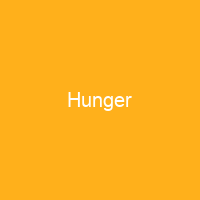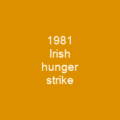Hunger: A Persistent Challenge
Imagine a world where every person has access to nutritious food. Now, imagine the stark reality of hunger—where millions struggle daily just to eat enough for an active life. Is this really possible in our modern era? The truth is, while significant progress has been made, hunger remains a formidable challenge that requires continuous attention and action.
The Evolution of Hunger
Hunger has plagued humanity throughout history, often exacerbated by war, disease, and natural disasters. 
Global Initiatives
The establishment of the UN coordinated global efforts to combat hunger through agencies like the Food and Agriculture Organization (FAO), World Food Programme (WFP), and International Fund for Agricultural Development (IFAD). These organizations promote food security and agricultural development, aiming to achieve SDG 2: Zero Hunger by 2030. Yet, despite these initiatives, progress has been uneven.
Recent Challenges
The FAO reports that climate change, conflict, economic slowdowns, and extreme weather are primary drivers of recent increases in hunger. The number of people suffering from chronic hunger is expected to rise by over 150 million by 2030 if no action is taken. This alarming statistic underscores the urgency of addressing these issues.
Measuring Hunger
The FAO measures hunger using a globally recognized approach that defines chronic undernourishment based on caloric intake below the minimum dietary energy requirement (MDER). However, some organizations use broader definitions that include malnutrition. The IPC scale is commonly used to measure food insecurity globally, while the Global Hunger Index (GHI) provides a more comprehensive view by considering multiple dimensions of hunger.
Food Insecurity and Its Dimensions
Food insecurity occurs when people worry about not meeting their food needs. This can lead to stunted growth for children and obesity for adults. The GHI is updated annually, featuring statistics on hunger and food security levels across countries. Since 2000, the GHI has shown a decline in hunger levels by 27%, but there have been increases since 2015.
Historical Perspectives
The need to address hunger has been recognized for centuries. Philosophers like Simone Weil wrote about it as a fundamental human obligation, while social historians noted that in pre-market societies, communities shared food to avoid famine. Efforts to alleviate hunger were often left to religious organizations and individual kindness until the late 19th century.
Academic and Political Shifts
The fight against hunger gained prominence after World War II with increased academic and political attention. The United States supported international efforts through funding UN development programs and partnering with multilateral organizations like the IMF and WB. The newly established UN coordinated global efforts, promoting food security and agricultural development.
Market-Based Solutions
In the 1950s, the US shifted its approach to prioritize market-based solutions over government intervention. By the 1980s, the IMF and WB promoted export-led economies, which sometimes led to negative effects on poverty alleviation efforts. However, in the early 21st century, these organizations returned to supporting government intervention and domestic agriculture policies.
Academic Consensus
The dominant academic view shifted from supply-side solutions to demand-side issues, focusing on distribution and food inequality. It is now broadly accepted that world hunger results from both production and distribution issues. Sen’s 1981 essay, Poverty and Famines: An Essay on Entitlement and Deprivation, played a significant role in forging this new consensus.
Global Food Crises
The global food crisis of 2007-2008 caused by rapidly increasing food prices led to food riots in several countries, toppling governments in Haiti and Madagascar. A second global food crisis unfolded due to the spike in food prices late 2010 and early 2011. Efforts to combat hunger increased since these crises, with initiatives like Pope Benedict’s encyclical Caritas in Veritate and the L’Aquila Food Security Initiative.
Recent Developments
The Food Assistance Convention was signed in April 2012, making it the world’s first legally binding international agreement on food aid. In May 2012, US President Barack Obama launched a ‘new alliance for food security and nutrition,’ while UK Prime Minister David Cameron held a hunger summit during the 2012 Summer Olympics. Grassroots efforts like food banks increased in Europe and North America.
Gender and Age Factors
World Bank studies show that 60% of hungry people are female, who face greater economic barriers and access to fewer resources than men. The elderly are disproportionately affected by hunger, with an 88% increase in seniors experiencing hunger between 2001 and 2011. Hunger exacerbates chronic conditions such as heart disease, diabetes, and respiratory diseases, increasing the risk of depression, congestive heart failure, and other serious health issues.
Conclusion
Hunger is a complex issue that requires multifaceted solutions. From global initiatives to local efforts, every action counts in the fight against hunger. As we continue to address this challenge, let us remember that ending hunger by 2030 is not just an academic goal—it is a moral imperative.
You want to know more about Hunger?
This page is based on the article Hunger published in Wikipedia (retrieved on February 7, 2025) and was automatically summarized using artificial intelligence.






